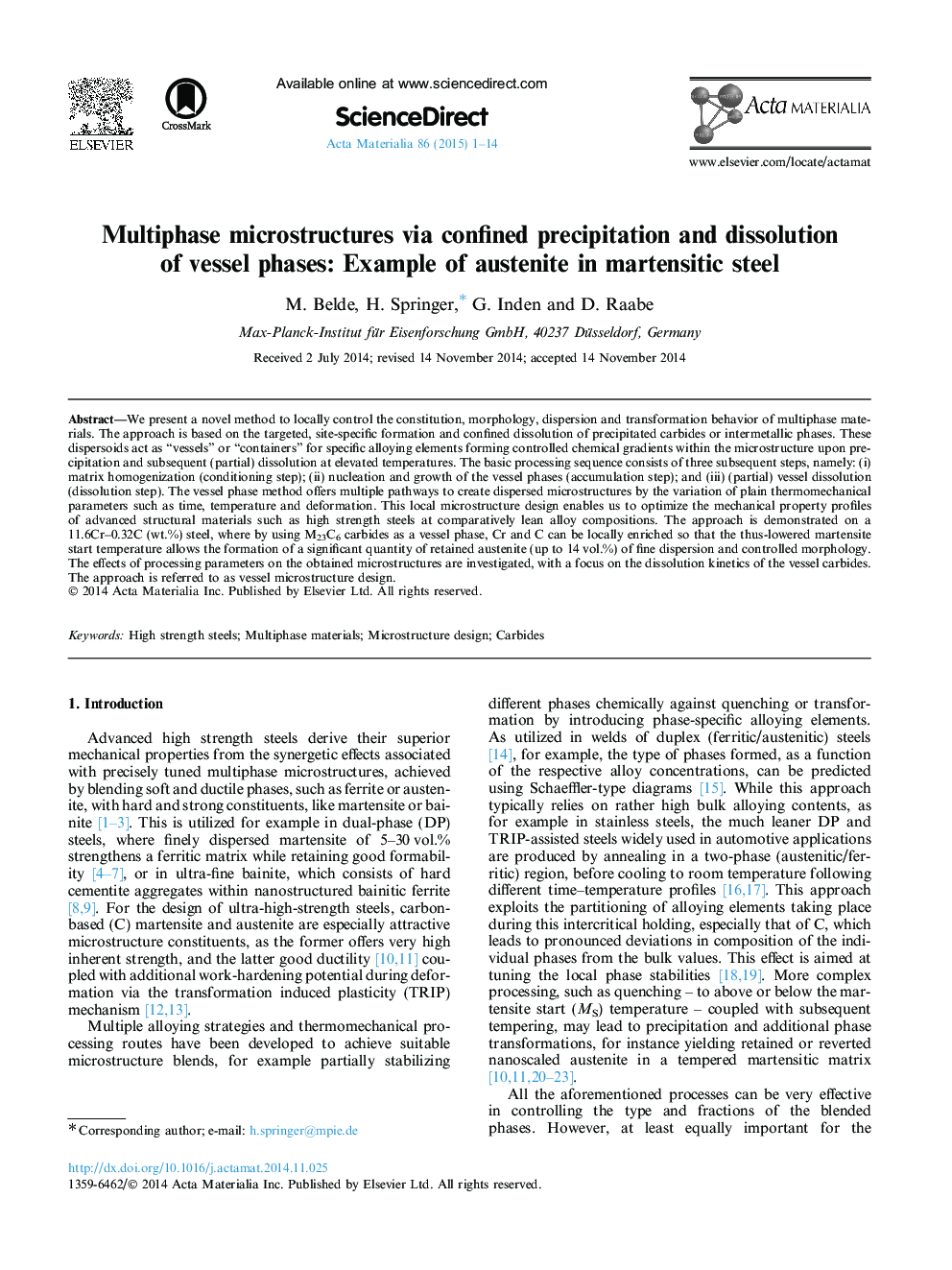| Article ID | Journal | Published Year | Pages | File Type |
|---|---|---|---|---|
| 7880564 | Acta Materialia | 2015 | 14 Pages |
Abstract
We present a novel method to locally control the constitution, morphology, dispersion and transformation behavior of multiphase materials. The approach is based on the targeted, site-specific formation and confined dissolution of precipitated carbides or intermetallic phases. These dispersoids act as “vessels” or “containers” for specific alloying elements forming controlled chemical gradients within the microstructure upon precipitation and subsequent (partial) dissolution at elevated temperatures. The basic processing sequence consists of three subsequent steps, namely: (i) matrix homogenization (conditioning step); (ii) nucleation and growth of the vessel phases (accumulation step); and (iii) (partial) vessel dissolution (dissolution step). The vessel phase method offers multiple pathways to create dispersed microstructures by the variation of plain thermomechanical parameters such as time, temperature and deformation. This local microstructure design enables us to optimize the mechanical property profiles of advanced structural materials such as high strength steels at comparatively lean alloy compositions. The approach is demonstrated on a 11.6Cr-0.32C (wt.%) steel, where by using M23C6 carbides as a vessel phase, Cr and C can be locally enriched so that the thus-lowered martensite start temperature allows the formation of a significant quantity of retained austenite (up to 14Â vol.%) of fine dispersion and controlled morphology. The effects of processing parameters on the obtained microstructures are investigated, with a focus on the dissolution kinetics of the vessel carbides. The approach is referred to as vessel microstructure design.
Related Topics
Physical Sciences and Engineering
Materials Science
Ceramics and Composites
Authors
M. Belde, H. Springer, G. Inden, D. Raabe,
